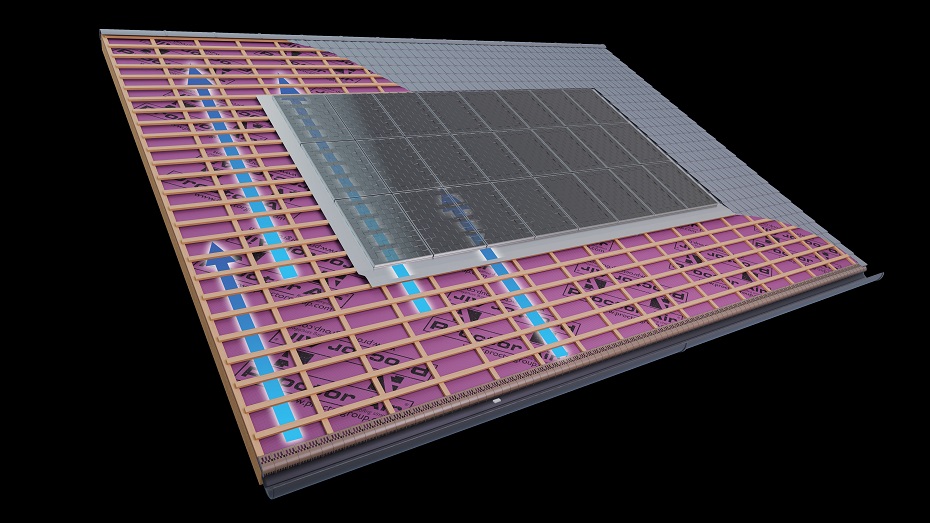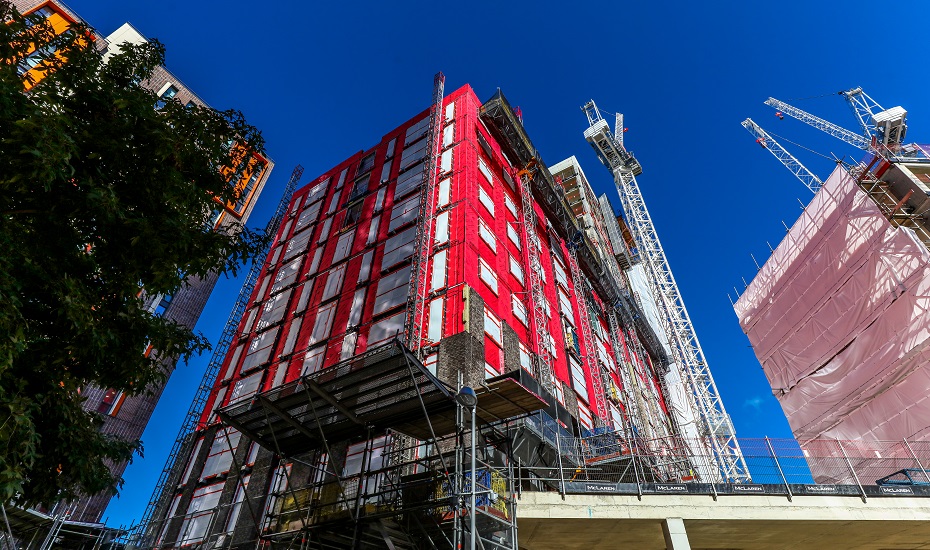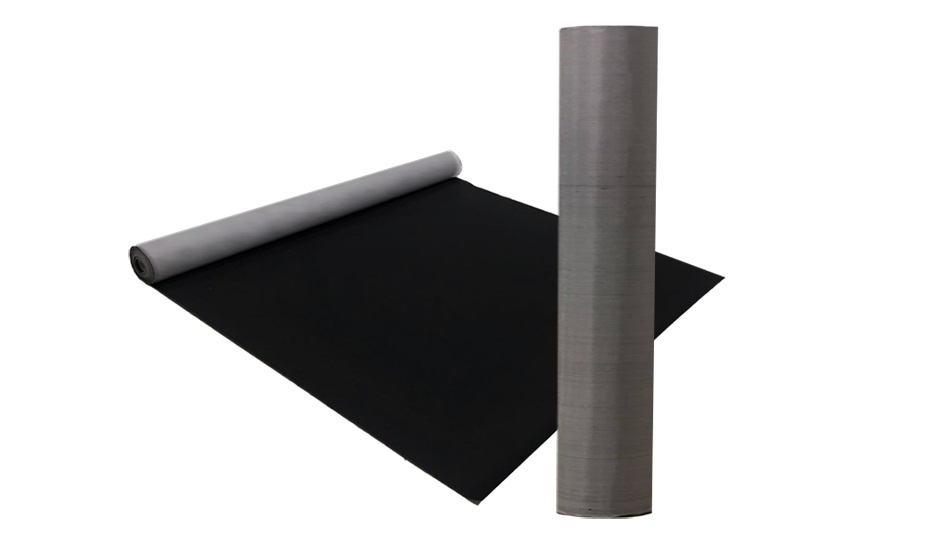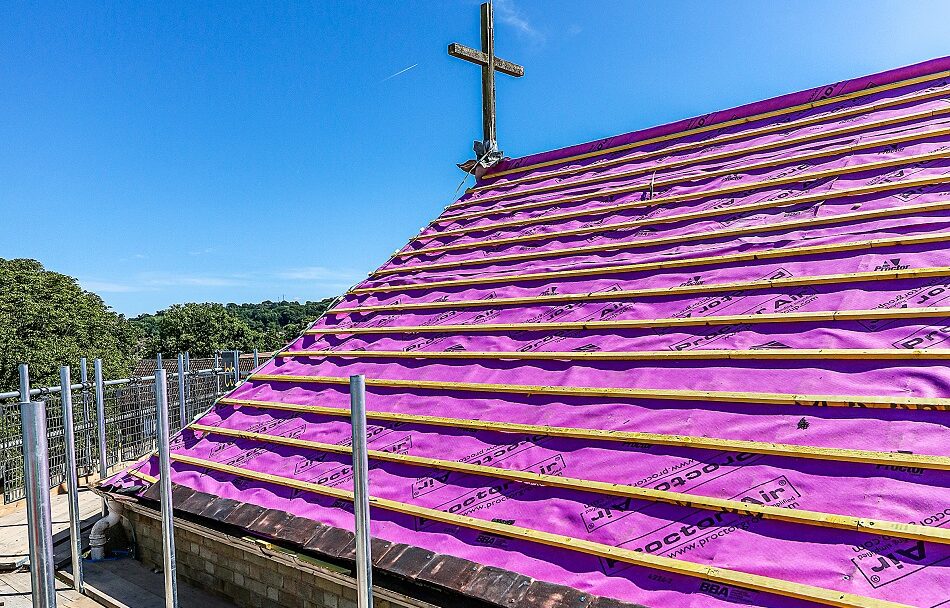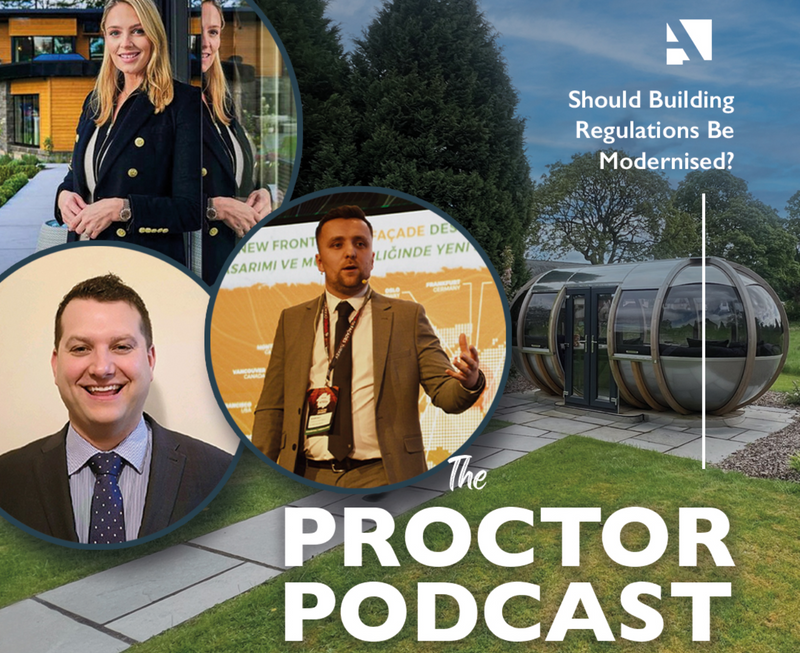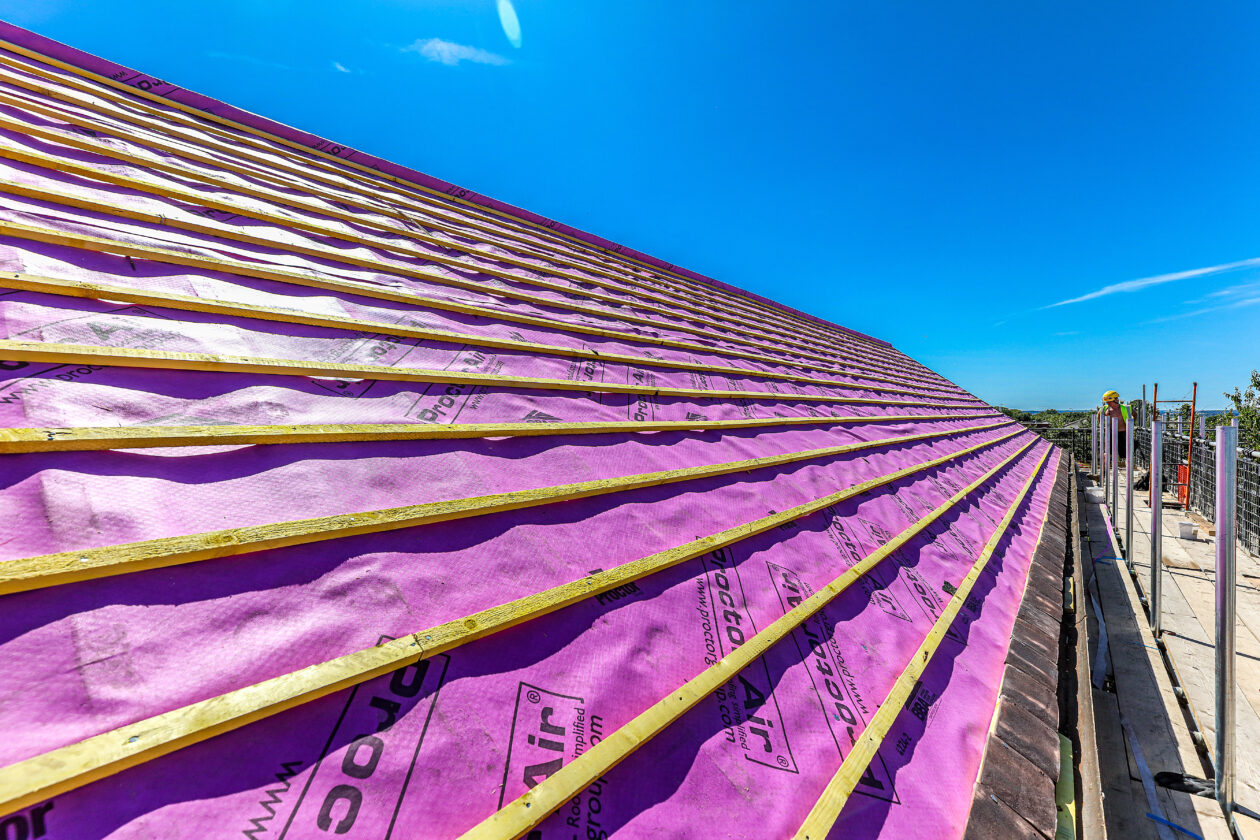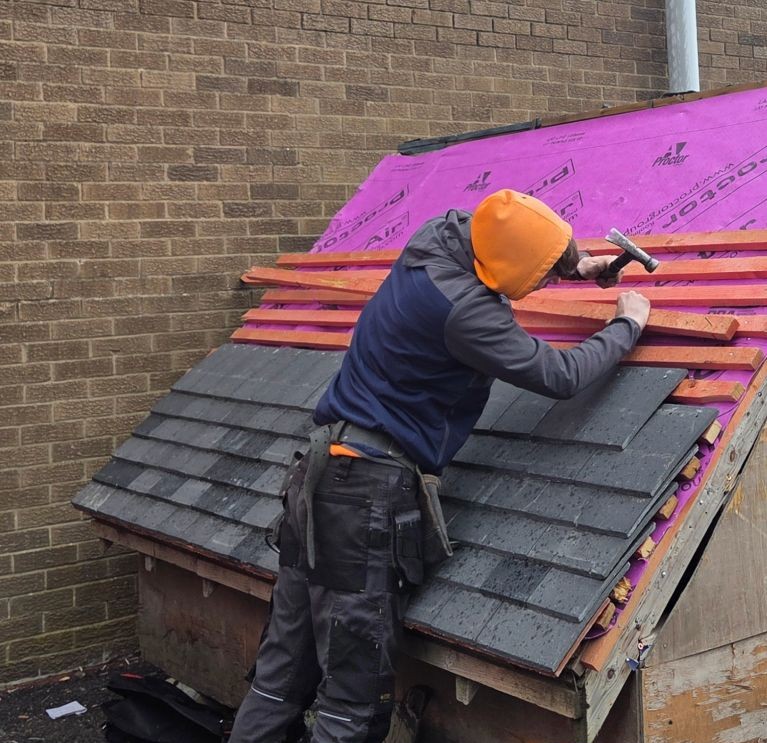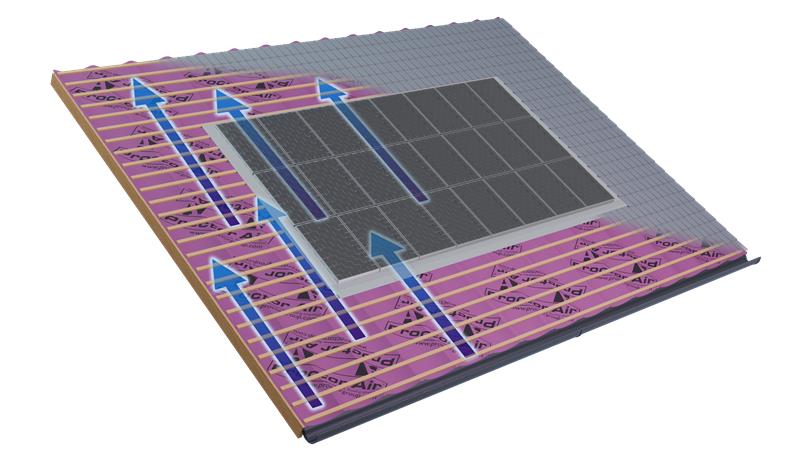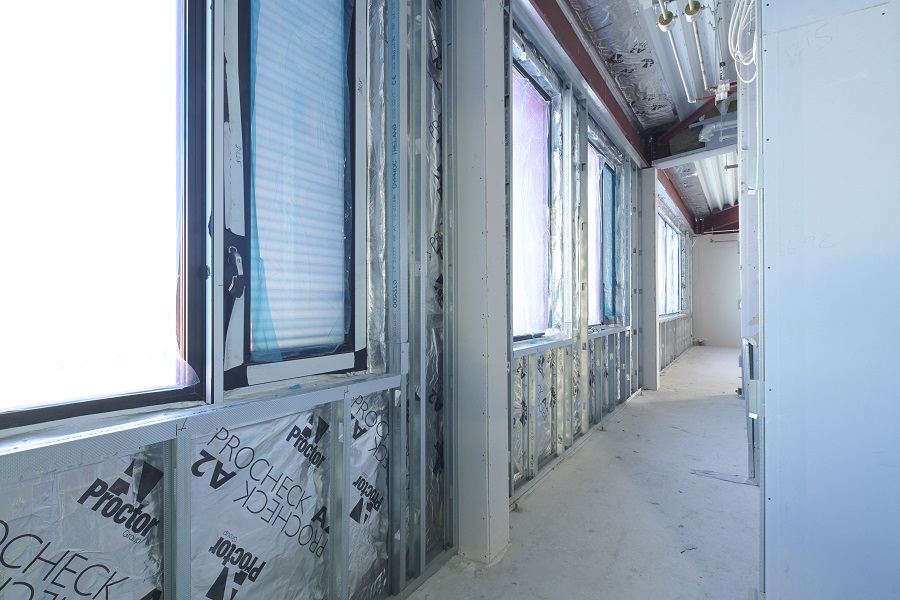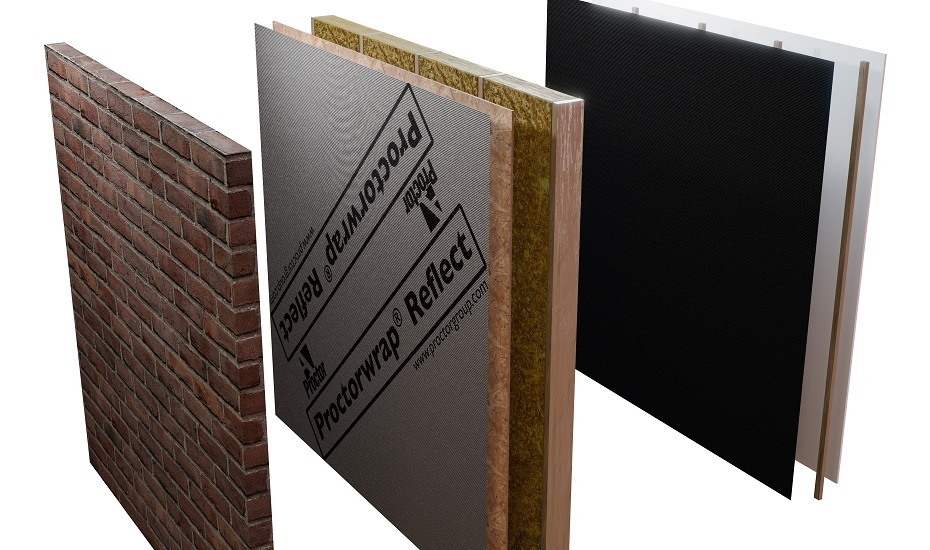Updates to industry guidance, like the NHBC’s revised technical standards for 2024, now list integrated solar PV panels as a type of impermeable roof covering. As a result, the A. Proctor Group technical team has received enquiries about the suitability of our Proctor Air® as an underlay in roofs featuring solar PV.
Impermeable Roof Coverings Are Not New
Standards and guidance already referenced impermeable roof coverings, including tightly-jointed slates and tiles, and metal sheets. With these finishes it is already common practice to include a ventilated batten and counter batten cavity. The air movement removes moisture from the area below the roof covering, preventing condensation from occurring.
Including solar PV alongside established impermeable coverings has caused people to read the guidance afresh. The 2024 NHBC Technical Standards, for example, say:
“Where arrays of integrated solar roof panels are installed, forming the roof covering, then the roof covering should be treated as air impermeable and the whole roof ventilated accordingly, unless the panel manufacturer is able to demonstrate their system is air permeable … Solar roof panel manufacturers may also require a ventilated space beneath the panel, to increase ventilation and cooling of the panel.”
The clause in bold is our emphasis. As people get to grips with the new guidance, it is leading to confusion over the acceptable permeability of underlays as well.
A Typical Tiled Roof Is Not Impermeable
An extra factor to consider is that ‘impermeable’ solar PV is often being installed as part of roofs with a traditionally air permeable covering.
Traditional slates and tiles, by their nature and often irregular sufaces and edges, are generally considered to be air permeable, ie the use of them on a roof allows vapour to pass through the joints in the tiles. More modern roofing materials and manufacturing processes can produce very close fitting tiles or slates, such as fibre cement slates and metal sheets and tiles.
These can be advantageous to use, due to availablility and the fact they can often be used to provide primary weather hold out at lower pitches, but the lack of permeability through the joints can mean that vapour can build up in the batten cavity, between the top of the underlay and the underside of the outer covering. If this vapour cannot escape you have an increased risk of moisture related issues, such as timber rot and corrosion of fixings.
Use of a counter batten and below tile ventilation, can easily resolve these potential problems.
Of course, the relationship between air movement and moisture vapour in the roof space, and air movement and moisture management below the roof covering, very much depends on the type of underlay used.
Understanding the Permeability of Different Roof Underlays
Traditional bitumen felt is a high resistance (HR) underlay. It is impermeable, allowing the passage of neither moisture vapour nor air from the roof space into the area below the roof covering. The roof space must be ventilated in accordance with relevant technical guidance, when using a HR underlay.
Low resistance (LR) membranes are vapour permeable, and come in two types. The majority of ‘breather membranes’ are airtight and allow the passage of vapour only. Air permeable LR underlays, as the name suggests, allow the passage of both vapour and air into the batten space, and then through the outer covering, depending on its permeability.
It’s not hard to see how wording like, “the roof covering should be treated as air impermeable” could lead specifiers and installers to think that the underlay specification is included. We can provide reassurance that only the external covering is included in that statement.
LR membranes, of either type, can therefore continue to be used in conjunction with integrated solar PV panels. When using an airtight LR underlay then the appropriate guidance in the NHBC documentation must be considered, ie this could include both batten and loft space ventilation.
When using Proctor Air, an APLR underlay, then there is only a requirement to provide ventilation into the batten/counter batten cavity as is currently the case with close fitting outer coverings – even if only part of it features integrated solar PV.
The slating and tiling must also be carried out in accordance with the relevant clauses of BS 5534:2014, BS 5250:2021 and the tile/slate manufacturer’s instructions.
What Are the Benefits of Using Proctor Air? What Are the Benefits of Using Proctor Air?
Using Proctor Air means that no additional ventilation into the roof space is required, and compliance can be achieved by using a ventilated batten and counter batten space. This complements potential cooling requirements for the PV Panels as well as allowing vapour to disperse the roof construction.
A ventilated batten and counter batten space means roofs can still benefit from the extra advantages offered by an air permeable LR underlay like Proctor Air®.
Proctor Air permits the passage of both air and moisture vapour through the roof construction, to the under-tile or ventilated batten space, and then to the outside. It reduces the risk of issues occurring in roof spaces due to poorly installed VCLs or ventilation, since neither is needed – even where the external covering is considered impermeable.
In fact, Proctor Air provides a more uniform flow of air than normal vents, helping to prevent ‘dead’ areas of poor ventilation in complex roofs.
A. Proctor Group is a 4th generation family business with a history of technical innovation, promoting good practice, and developing products that roofing contractors want to use. We have applied this wealth of experience to creating the next generation of air permeable LR membrane.
By choosing and installing Proctor Air, specifiers, contractors and building owners/managers can enjoy the confidence that comes from a high-performance product doing its job without intervention. All of this is backed by our 15-year warranty, offering peace of mind even in the face of an uncertain future climate.
For more information visit: https://proctorgroup.com/products/proctor-air
Request a Sample
Technical Advice
CAD Detail Review
U-Value Calculation
Book a CPD
Specification Check
